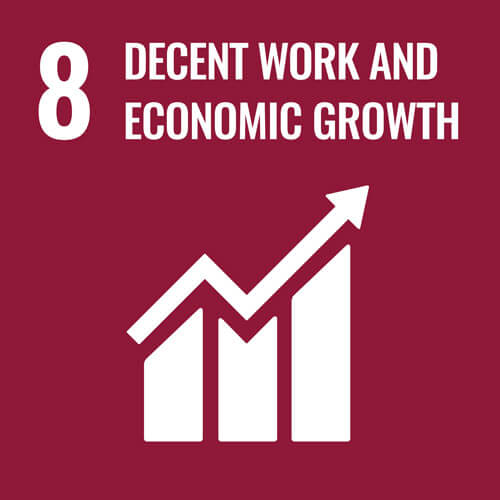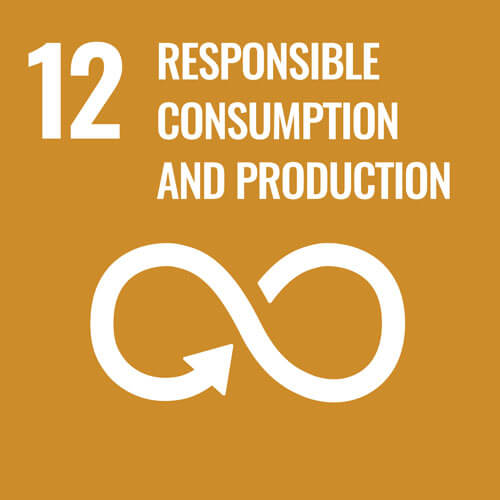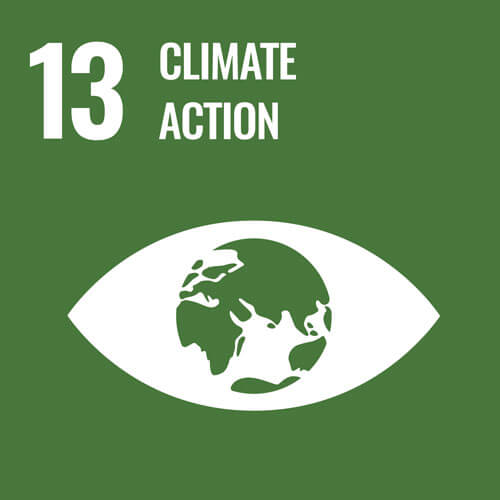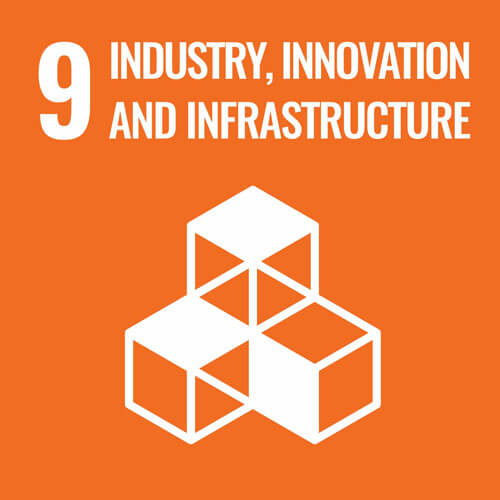inSPire: Our sustainable development goals
When we do something, we do it with passion, authenticity and conviction. This also applies to our sustainability initiatives in the context of inSPire. To frame our activities even more precisely, we have mapped “our” Sustainable Development Goals (SDGs) from the United Nations’ 2030 Agenda for Sustainable Development.
In order to select the most significant areas of the 2030 Agenda for the High Performance Metals Division (HPM) with the aim of increasing our positive impact on the environment, a great deal of exchange and preparation was required within the team. “If you look at the SDGs from a high altitude, it seems simple to tick the boxes. If you take a closer look, you realize how much more there is to it. It was important for us to choose SDGs to which we make a direct contribution as a division,” says HPM Chief Sustainability Officer Philipp Horner. Four SDGs were selected in the process, which together represent the three-pillar model of sustainability: Economy, ecology and social issues. These SDGs were then linked to the strategy and the associated projects.
SDG 8 Decent work and economic growth

The overarching goal of this SDG is to promote sustained inclusive and sustainable economic growth, full and productive employment and dignified work for all, including health and safety and gender equality. Of particular importance to us are the sub-goals relating to the achievement of a higher level of economic productivity and full and productive employment as well as the gradual improvement of economic performance and prosperity while decoupling from resource consumption. Protecting employee rights and ensuring a safe working environment for all employees is also on our list of priorities. In addition, it is important for us to contribute to the promotion of development-oriented policies that support productive activities, the creation of jobs with dignity, entrepreneurship, creativity and innovation.
With our initiatives on Female Empowerment, projects to promote diversity, equality and integration, family-friendly approaches such as childcare, mentoring and new working time models, we are providing significant support for the goals of SDG 8. The further development of energy efficiency, resource efficiency projects and education and training also contribute to this SDG. The global Health & Safety Organization makes an essential contribution to improving the safety of our employees. We want to evaluate the effectiveness of our measures using Key Performance Indicators, such as
- Improvement of occupational safety: LTIFR 5.5 and less by 2030
- Increase the proportion of female: Managers from 14% to 18% by 2030 (Group target)
- Improving energy efficiency: Specific energy consumption in MWh/t
- Reduction of primary alloys: Recycling rate to 90% by 2030
SDG 12 Responsible consumption and production patterns

SDG 12 focuses on ensuring sustainable consumption and production patterns in order to limit the use of resources. The sustainable management and efficient use of natural resources, the reduction of waste through prevention, reduction, recycling and reuse, the introduction of sustainable practices and the transparency of sustainability information are important to us here. SDG 12 also aims to ensure that people around the world have access to the necessary information on sustainable development and thus have an awareness of sustainable lifestyles.
In the HPM Division, the 12th sustainable development goal is reflected in numerous projects and a wide range of topics:
- Recycling of by-products
- Zero Waste
- Alternative sources of raw materials
- Decarbonization solutions for customers
- Reduction in water consumption
- Recycling tools and scrap
In addition to the topics mentioned above, we are also working on initiatives that are essential to achieving our Group goal of sustainable procurement. By 2025, 70% of the Group’s total purchasing volume will be verified per the ESG criteria of the voestalpine “Compliance and Corporate Responsibility Checklist”. In addition, we want to use over 90% recycled scrap and secondary raw materials in our production processes by 2030. While many projects are already being implemented, it is intrinsic to us to develop innovative solutions for new problems in the area of sustainability, to promote exchange within the industry and across sectors and thus to be able to constantly improve and redesign ourselves.
SDG 13 Climate action

Taking urgent steps to combat climate change and its effects is the goal of SDG 13. The sub-goals relating to climate change and national policy, strategies and planning as well as improving education and awareness on this topic are particularly important to us. We are also focusing on optimizing personnel and organizational capacities for climate change mitigation.
We are already working intensively on various sustainability projects within the Division. These include carbon footprint as part of the purchasing criteria, alternatives to natural gas, increasing the share of renewable electrical energy plus decarbonization roadmaps for each production company and each Value-Added Services Region.
We want to measure the success of our initiatives by the number of employees trained in sustainability. In addition, we place particular emphasis on open exchange and suggestions for improvements in energy efficiency as well as energy savings at project level in MWh or CO2e. We have set ourselves the goal of increasing our energy efficiency by 2% per year and increasing the proportion of renewable electrical energy in our energy mix. By 2029, we will reduce our Scope 1 & 2 emissions by 50% (base year 2019) and Scope 3 emissions by 25%.
The Courage to change

The need for projects that solve problems in the interplay between economy, ecology and social issues will continue to increase, while we are already feeling the first effects of climate change. It is therefore essential for us to start thinking now about future strategic directions based on AGENDA 2030. This will also include new subject areas and SDGs. We have therefore already defined another SDG for implementation: 9 “Industry, innovation and infrastructure”. It aims to build a resilient infrastructure, promote inclusive and sustainable industrialization and foster innovation. With this further goal in mind and our many additional initiatives throughout the world, we will continue to support global sustainable development together in the future.
Briefly explained: The Sustainable Development Goals*
The SDGs (Sustainable Development Goals) are the global goals for sustainable development. They are part of the 2030 Agenda for Sustainable Development adopted by the United Nations General Assembly on September 25, 2015. The 193 member states have thus agreed on 17 goals for sustainable development, which cover social, ecological and economic aspects. The SDGs are divided into a further 169 targets and include a new interconnected understanding of poverty, environmental degradation, inequality, production and consumption patterns and corruption, to name just a few examples. It was recognized that various problems need to be tackled everywhere and at the same time. The universal nature of the agenda means that all goals apply to all countries. Responsibility for implementation therefore lies both in the domestic sphere and the international sphere.
*Source: https://www.sdgwatch.at/de/ueber-sdgs/
